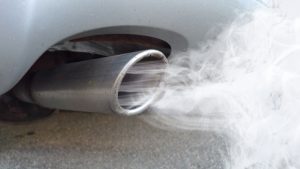What does the IPCC report mean for metals markets, industries?
The media has been buzzing with various interpretations of the UN Intergovernmental Panel on Climate Change (IPCC) report on rising greenhouse gas emissions and the likely scenarios before us for the next decade (and through to the end of the century).
Interpretations vary between “the end of the world is nigh” and “this is getting a little concerning and we really ought to do something about it.”
As metal buyers, it really doesn’t matter if we agree that climate change is manmade. Enough extreme weather events have happened over the last few years — the last few months, even — that most populations that still have any say over government policy are clamoring for action, fearful of the consequences of the opposite.
We won’t go into the climate change debate here. For us, the question is much narrower: what does this mean for metals markets and industry?
Receive the latest short-term and long-term outlook for the full range of industrial metals (base and ferrous) at the annual MetalMiner Forecasting Workshop on Aug. 25.
IPCC report and the impact on metals
Rising sea levels, extreme weather, lack of rainfall will have an impact on both mining, metals refining and manufacturing operations.
The impacts, however, will vary greatly by location. As such, the winners and losers are hard, if not impossible, to predict.
Of more relevance is the fact that governments will likely step up their policies, possibly dramatically, to support a switch to decarbonization, to the build out of renewables, and to the adoption of less-polluting technologies.
Automotive, aircraft, shipping and, most of all, productive industries like steel, aluminum, zinc and thermal power generation will go through enormous change if they are to achieve current environmental pledges (plus those that could be made at this year’s upcoming COP26 gathering).
Policy shifts
Some countries have already moved to drop coal as a power source. Pressure will mount, from both governments and investors, for steel and other basic metal producers to switch from coal or to invest in mitigation technologies. Such technologies include carbon capture, which has remained stubbornly uneconomic but may be forced into the mainstream by governments ramping up carbon taxes and/or supporting industry investments with matching subsidies.
In some markets, such as parts of Europe, hydrogen as a fuel will be supported. With it, investment in clean hydrogen production will boost catalyst demand, even as automotive internal combustion engine (ICE) production is dropped in favor of electric vehicles.
Expect a ramp up in protectionist measures. Neither governments subsidizing their local industry nor investors in those industries will welcome foreign competition from countries without such measures undercutting their heavy financial commitments.
Europe has already mooted such measures, these will happen over the next couple of years in most developed markets. At the same time, brand-conscious manufacturers like Apple and BMW, to name just two, are already favoring so-called certified zero-carbon raw materials (like aluminum). This will favor those manufacturers able to cater to such rising demand with premium pricing.
Electric vehicle buzz
In the last 12 months, we have seen a significant increase in the uptake of electric vehicles. State subsidies have supported that increase. Such subsidies will almost certainly increase as governments seek to encourage greater uptake. The goal of an end-of-decade switch to total EV production has already announced in some markets and will likely make their way to to the largest markets, like the U.S. and China.
Earlier this year, we saw a lot of fizz and pop in the copper, nickel and lithium markets as investors bet big on electrification.
That fizzled out in the spring. However, there’s every possibility in a year of both the new IPCC report and COP26 in November that climate change action will move back up the agenda. As a result, “metal shortage” stories could stimulate markets again.
Does this represent a supercycle born on the road to electrification, as Goldman Sachs would have us believe?
Not in our opinion. However, it will be a significant supporter of prices and, in time, of greater demand. EV production will ramp up, as will charging infrastructure rollout. Furthermore, governments will need to connect remote locations to national grids using renewables.
Make no mistake, this is going to cost us a lot of money — in our pockets in taxes, in elevated metal prices and the early loss of productive but polluting investments.
But with it will come opportunities for new technologies, new industries and new ways of living – from home working to changes in diet. We live in interesting times.
Cut-to-length adders. Width and gauge adders. Coatings. Feel confident in knowing what you should be paying for metal with MetalMiner should-cost models.



Leave a Reply